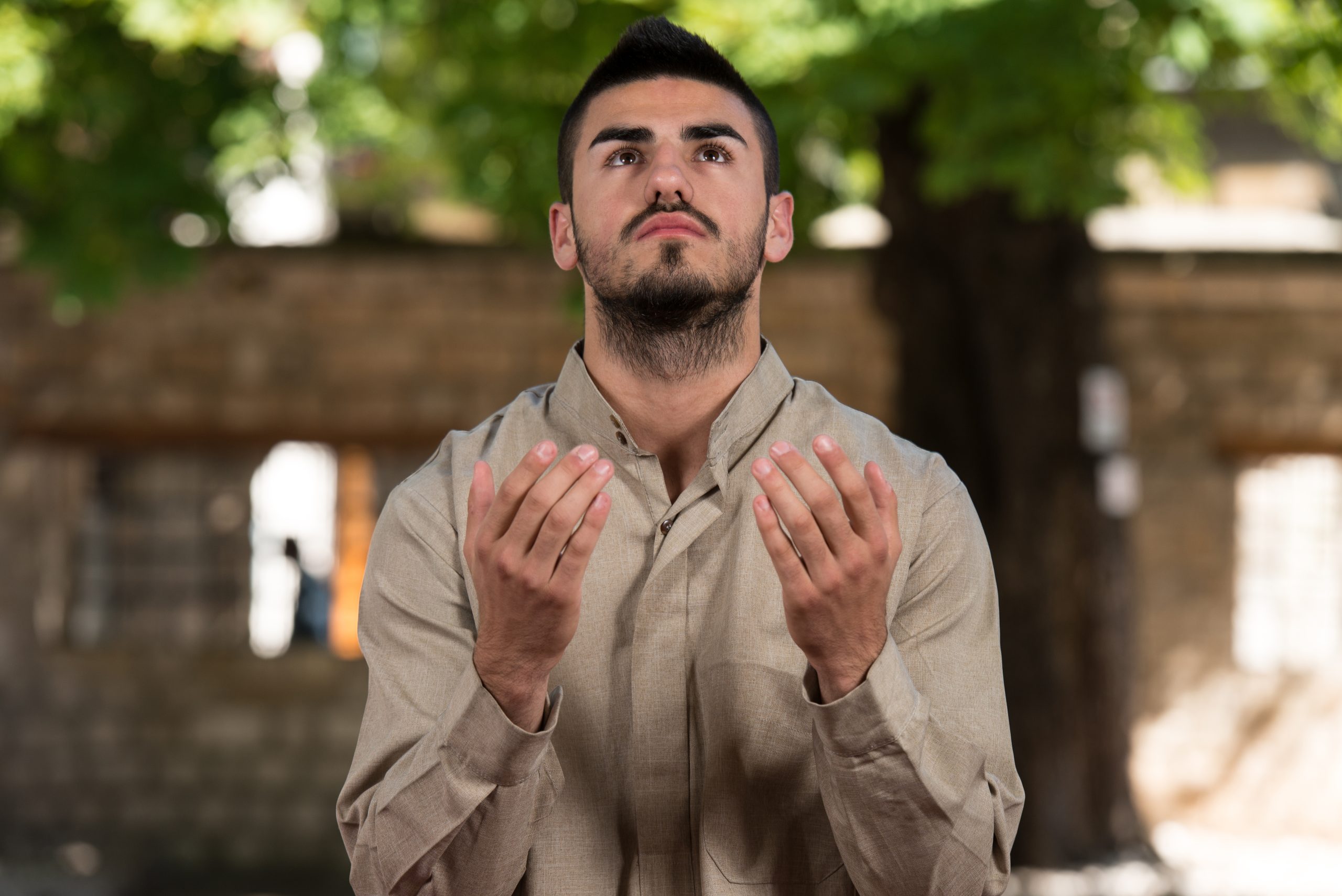Christian Prayer: Silence & Dancing Between Knowing and Unknowing
All four Gospels tell us that Jesus prayed. He prayed alone on mountains and in the wilderness. He prayed on roads, in people’s homes and in temples. He prayed alone with God and he prayed with and for others. He prayed out loud and he prayed silently, in his own heart. The prayers of Jesus that we hear in the Gospels often reflect or even repeat the prayers we find in Jewish scriptures. This is no surprise because Jesus prayed as a devoted Jew, and his prayers often taste like the Psalms. We can guess from his ministry that Jesus placed a higher priority on prayer, and on the silent contemplation of holy Presence than on religious duties and laws. In fact, religious authorities often accused him of violating sacred Jewish laws.
If God is sometimes depicted in Hebrew scripture as a personal Presence with qualities and emotions analogous to human ones, Jesus’s prayers indicate that he was selective in his references to Hebrew images of God. Most often, his prayers assume that God is a consistent loving presence–not an arbitrary, wrathful, jealous or vindictive One–who will always protect and guide him and never abandon him. Sometimes, as when Jesus upbraids religious authorities for being self-centered and controlling, Jesus could manifest God’s inclusive Love as “tough Love,” as when he overturned the tables of the moneychangers in a temple (Matt. 21:12). Jesus’s prayers assume that he is, in a way, in love with God and that he himself is transparent to God, to the Creator. His prayers also suggest that while he realizes that he is one with God, he is also distinct from God (John 14:9 &14:28).
Unfortunately, Jesus did not provide us with a detailed developmental program of prayer. In fact, the only explicit direction he gave is recorded in the Gospel of Matthew where he emphasizes solitude and a specific focus on God as Creator and Father. The prayer that begins, “Our Father in heaven” is probably the one prayer that Christians of all denominations have in common. By tradition it is called The Lord’s Prayer, one that taps the devotional, interpersonal, and relational dimension of human-divine living. We also read passages that seem more private and contemplative. It’s good to remember that this name, “Father” which Jesus speaks about is a translation of Jesus’ actual Aramaic word, Abba, a name that indicates a deep intimate, quasi-interpersonal relationship with the Creator. Jesus indicates that we can say “You” to the Creator of us and everyone.
As Jesus suggests in Matt. 6:7-8, in this relationship, words are sometimes not necessary: “When you are praying, do not heap up empty phrases as the Gentiles do; for they think that they will be heard because of their many words. Do not be like them, for your Father knows what you need before you ask him.”
Christian Mindfulness & Emptiness
When Americans in the early 21st century think of meditation and other spiritual disciplines for training one’s awareness, we think of Buddhism, and practices such as Mindfulness meditation. American Buddhist teachers have called attention to the fact that most Americans’ minds are like a tree full of jumping monkeys. In any given moment we are not really present, but rather worrying and obsessing about yesterday and tomorrow. We are distracted, multi-tasking creatures of habit who suffer by being inwardly divided. This is why there are popular Buddhist meditation centers in every American city. We are looking for relief from the chaos and violence in our own minds. Most Americans don’t know that Christians also have inherited many spiritual tools to help us break through the cloud of gnats and mosquitoes in our minds that we call obsessive thinking, worry, anxiety and habitual fear.
For example, one of the Christian Desert Fathers, the monk Evagrius Ponticus (345-399 A.D.), taught a form of hesychasm (Greek: quiet) in which one comes to see the conditioned links between thoughts and emotions, and then, through meditation and prayer, finds a deep calm called apatheia. In apatheia the mind is integrated and purified of its naturally tumultuous activity, allowing one to simply “be” in Holy Presence or to pray without distraction. Monks such as Evagrius believed that virtue in one’s speech and behavior would follow freely from a mind that is emptied of distracting thoughts. Some other Christian contemplatives would describe this emptying as a kind of on-going detachment from chaotic thoughts. It’s not that thinking goes away–sometimes our thoughts may bring blessings or healings!–but that we experience an inward spaciousness so that we are not so caught up in our own thoughts and worries. When we have this kind of detachment, we are less likely to mistake our thoughts and opinions for our present reality, and less likely to impose our opinions on others.
This detachment from thoughts, memories, plans and feelings must not become an escape from your embodied reality. One can silently practice this detachment even while in conversations with others–even in Board meetings! Detachment is a special, powerful aspect of awareness which frees us to hear what’s really going on inside us, and to hear what others are really saying. Sigmund Freud called this awareness, “evenly suspended attention,” as if listening without knowing exactly what you’re listening for. When what you do know important insights from past experience, you must trust that they will arise quite naturally if you are truly listening to yourself and to others.
In the new book, My Dear Far-Nearness (2022), Dr. Jonas explores the disciplined practice of detachment as it is described by our long history of Christian mystical reflection, primarily in the level of awareness he calls “First Person.” See the website, mydearfar-nearness.org
Contemplative Practices
that Tap Awareness Itself
Go to your quiet holy place.
Spend some moments settling down. Use whatever ways you have learned to center yourself. Let the spine be straight, the body relaxed and alert. Let your body be firmly planted on the earth, your hands resting easily, your heart soft, your eyes closed gently. Bring awareness to your body, emotions, and thoughts, and whatever is going on around you. Breathe gently and on purpose, slowly breathing into the belly, noticing the pause at the end of the in-breath and out-breath. Consciously soften any obvious tension. Notice that when all sensations, thoughts, memories, and emotions fall away, there is only a vast empty space, within which all experience passes.
This is not a space that you can see or touch. It’s an intuitive “sense” of space. It is the space of infinite God-given awareness that surrounds and inhabits what you are aware of. (Awareness is distinct from what we are aware of).
Notice, and let go of any habitual thoughts or plans, but don’t assume that you can do this right now, at will. This kind of noticing takes time, patience and determination. If you have settled on Love as the ultimate destination in your brief life, gather your attention into the midst of this desire. Be aware that everything is at stake. This is your one chance to reach that all-encompassing Love. You’re one chance! Settle down, again and again to be with your discomfort, and to notice your longing. Let silent words of prayer emerge in the silence. Words such as “Help,” and “I need You.”
Remember that breathing is holy because each breath is a gift of the Spirit (Ruach in Hebrew and Haggios Pneuma in Greek). Don’t take breathing for granted!
Buddhist Methods of Meditation
There are many excellent resources devoted to Buddhist meditation on the Web. Rather than offer a list, we recommend that you use your favorite search engine to search for various forms of Buddhist practice.
Frequently, such websites will feature a button that is labeled “Methods” or “Meditation Instruction.” Explore the rich variety of Buddhist teachings and practices. You will find that some practices resonate beautifully with Christian Centering Prayer. Search phrases such as: Vipassana Buddhism, Hinayana Buddhism, Mahayana Buddhism, Vajrayana Buddhism, Ch’an Buddhism, Korean Buddhism, Zen Buddhism, Soto Zen, Rinzai Zen, Tibetan Buddhism, Shin Buddhism, Nichiren Buddhism or Pure Land Buddhism.
Most often, these forms of meditation resonate with “First Person” awareness as described at: mydearfar-nearness.org We usually emphasize that even though there are great and beautiful resonances between Buddhist and Christian practices, they are not exactly the same.
Methods of Prayer & Meditation

Photo credit: Robert A. Jonas

“Misty Ocean Flute”
read more
